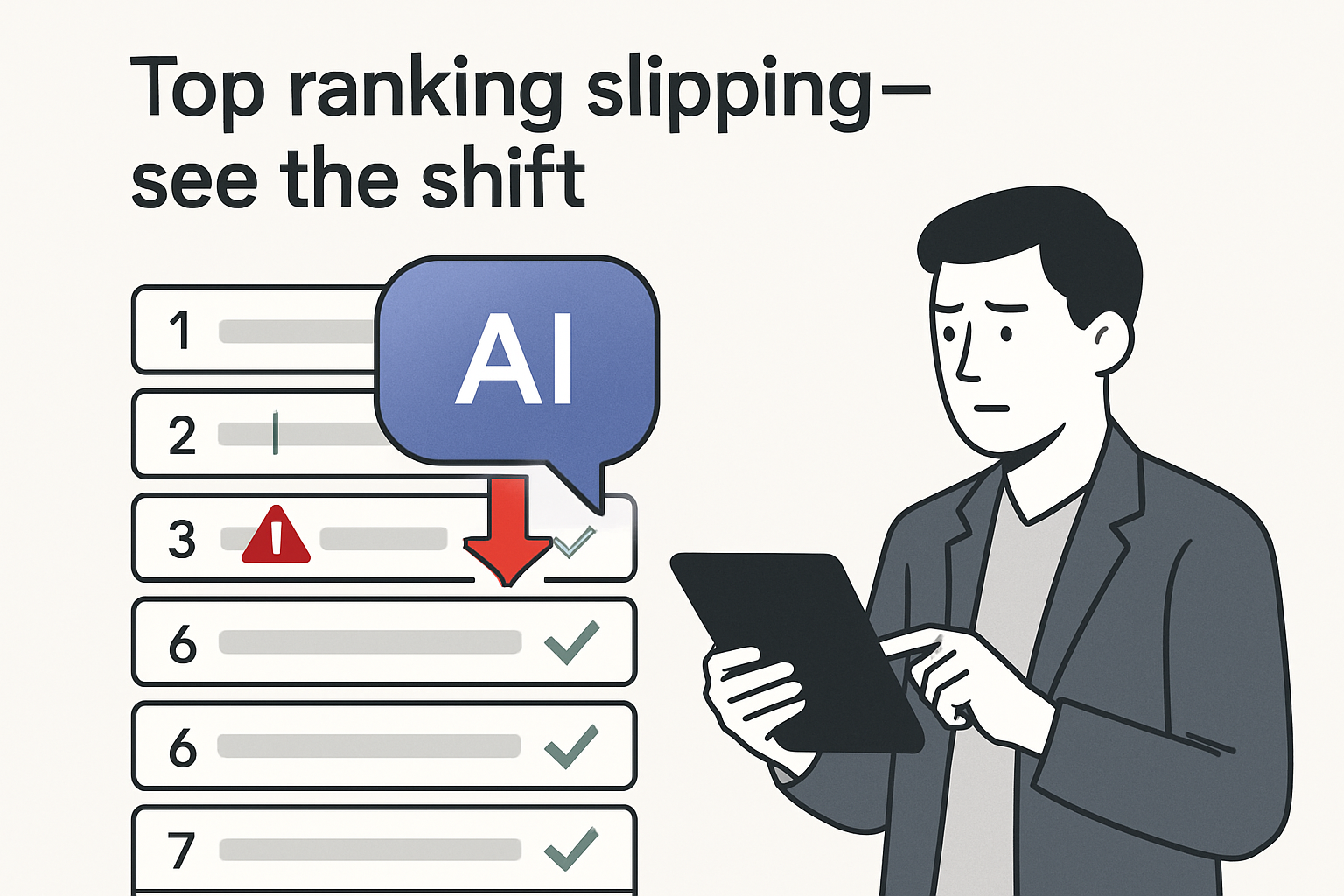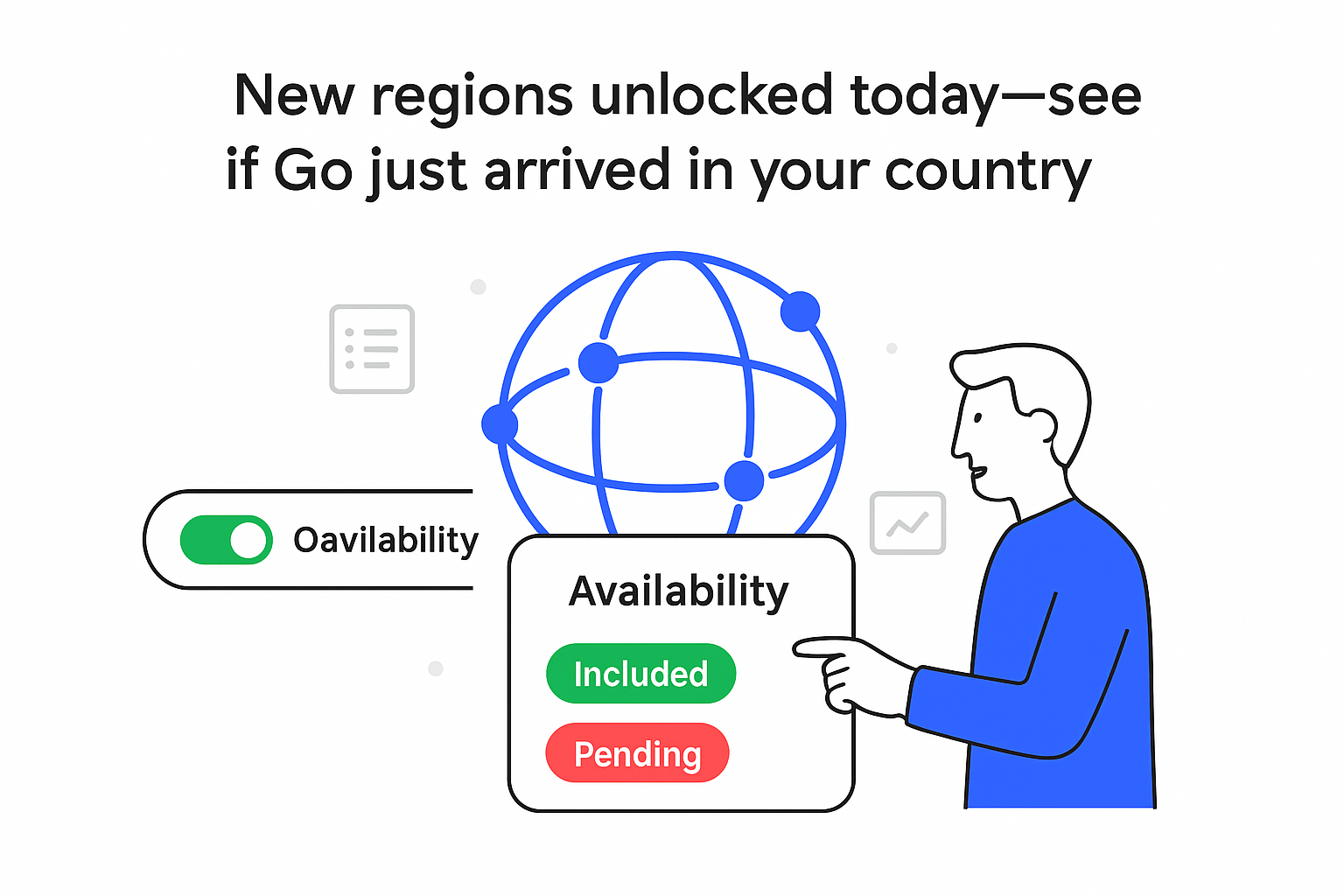Google’s AI Overviews now surface on a majority of knowledge queries, reshuffling the clicks that once flowed almost automatically to the first blue link. Fresh data from GrowthSRC Media show the top-ranking result’s click-through rate (CTR) sliding from 28 % to 19 % across 200 000 U.S. keywords – a nine-point, year-over-year drop. The analysis below explains the mechanics behind the shift, the knock-on effects for paid and organic programs, and the metrics marketers should recalibrate for 2025.
AI Overviews CTR Impact – Key Takeaways
- Position-1 CTR fell from 28 % to 19 % (about a 32 % relative decline) after AI Overviews expanded to 172 000 queries in May 2025. Forecasts that still assume 25–30 % for rank 1 need adjustment.
- Clicks are being redistributed, not erased: positions 6–10 gained 30 % more clicks, suggesting users who conduct deeper research scroll past the AI card. Long-tail pages can still win attention if snippet copy is strong.
- Product Widgets embedded in the same layout siphon high-intent shoppers to Google Shopping. Category pages in home, fashion and beauty are seeing the sharpest declines.
- On many desktop results, ads plus the AI Overview occupy as much as 1 100 vertical pixels. Brands relying solely on organic links will record higher impression share but fewer visits, pushing them toward blended cost-per-acquisition (CPA) models that include paid search.
- Impact is uneven: informational queries suffer most, while navigational or brand-plus-product terms remain relatively steady. Segment data by intent before reallocating budget.
Situation Snapshot
- Trigger: July 2025 report from GrowthSRC Media analyzing Google Search Console data for 30 sites in SaaS, B2B, retail and education.
- Scale change: AI Overviews jumped from 10 000 queries (Aug 2024) to 172 000 (May 2025).
- CTR change: Rank 1 now averages 19 % and rank 2 averages 12.6 % across the study set.
- Publisher view: MailOnline cites sub-5 % desktop CTR when an AI Overview appears, according to Press Gazette.
- Official stance: In an interview with The Verge, Google CEO Sundar Pichai said links cited inside the AI card "get higher click-through rates" than standard snippets.
- Community response: Many publishers and SEOs report overall traffic declines, indicating benefits are distributed unevenly.
Breakdown & Mechanics
1. Layout economics
The AI Overview can consume 500–650 pixels on mobile, usually above both ads and organic links. In knowledge-heavy queries a user must scroll at least once to even see position 1. Earlier eye-tracking studies already showed a 40 % drop in first-result focus when any rich feature appeared; the AI card amplifies that effect by answering the question outright.
2. Link placement inside the AI card
Each AI Overview surfaces two to five citations. GrowthSRC found that fewer than 20 % of pages that rank 1 are also cited, limiting the ability to offset lost CTR. Because citation logic is opaque, monitoring frequency has become a new KPI.
3. Product Widget synergy
Since November 2024 modules such as "Popular Products" and "Under $X" integrate with the Shopping Graph. When triggered, they push organic links even further down. CTR on product-list pages in home and beauty categories fell 25–40 % in the same timeframe.
4. Changing user behavior
The 30 % click uplift for positions 6–10 indicates a cohort of users distrusts AI summaries for deeper research. They scroll past the overview and ads, creating a new mid-SERP opportunity similar to the 2019 zero-click pattern.
Impact Assessment
Organic Search
- Effect size: –9 percentage-point CTR at rank 1; traffic dilution across the top five positions.
- Winners: Pages cited in AI Overviews and publishers with strong mid-SERP rankings for investigative content.
- Losers: Informational blogs that rely on headline clicks and product category pages buried under widgets.
- Actions:
- Track citation frequency via the Search API or independent SERP scrapes and include it in performance dashboards.
- Optimize metadata for ranks 6–10 – concise hooks, schema and FAQ markup help capture scroll-through traffic.
- Shift success metrics from raw sessions to assisted conversions and brand-search lift.
Paid Search
Ad inventory above the fold is scarcer, so cost pressure is rising. Two retail clients in the GrowthSRC cohort saw a 12 % cost-per-click increase on AI-triggering queries after May 2025. Model a blended CPA and plan for bids that are 10–15 % higher where organic CTR drops the most.
Content & Creative
AI Overviews reward concise, fact-rich copy with authoritative sourcing. Updating top articles with clear statistics, dates and expert quotes improves citation odds. Rich media – video or step-by-step illustrations – still appears outside the AI card and can protect clicks.
Operations & Reporting
Revise forecasting templates: apply a 0.18–0.20 CTR for rank 1 on AI-exposed SERPs and 0.26–0.28 where the feature is absent. Educate stakeholders to track contribution to pipeline rather than pure session volume.
Scenarios & Probabilities
- Base (likely, 60 %) – AI Overviews remain default on most U.S. knowledge queries; CTR stabilizes near current levels.
- Upside (possible, 25 %) – Regulatory or UX pushback forces Google to collapse the card by default, restoring three to four percentage-points of CTR to top results.
- Downside (edge, 15 %) – AI Overviews expand to commercial queries at scale and Product Widgets add payment flows, cutting organic clicks on transactional terms by another 20 %.
Risks, Unknowns, Limitations
- Google could change citation heuristics at any time, reshuffling which domains benefit.
- The data are U.S.-centric; international roll-outs may behave differently.
- Search Console only records outbound clicks. User interactions confined to the AI card remain invisible to site owners.
- GrowthSRC’s sample under-represents news publishers, so declines in that vertical could be steeper than reported.
Sources
- GrowthSRC Media, July 2025 – “AI Overview Impact on CTR”
- WAN-IFRA Congress, June 2025 – MailOnline SEO findings
- The Verge / Decoder interview with Sundar Pichai, April 2025
- Press Gazette, June 2025 – AI Overview traffic effects on publishers
- Google I/O keynote, May 2025 – U.S. roll-out of AI Overviews







.svg)